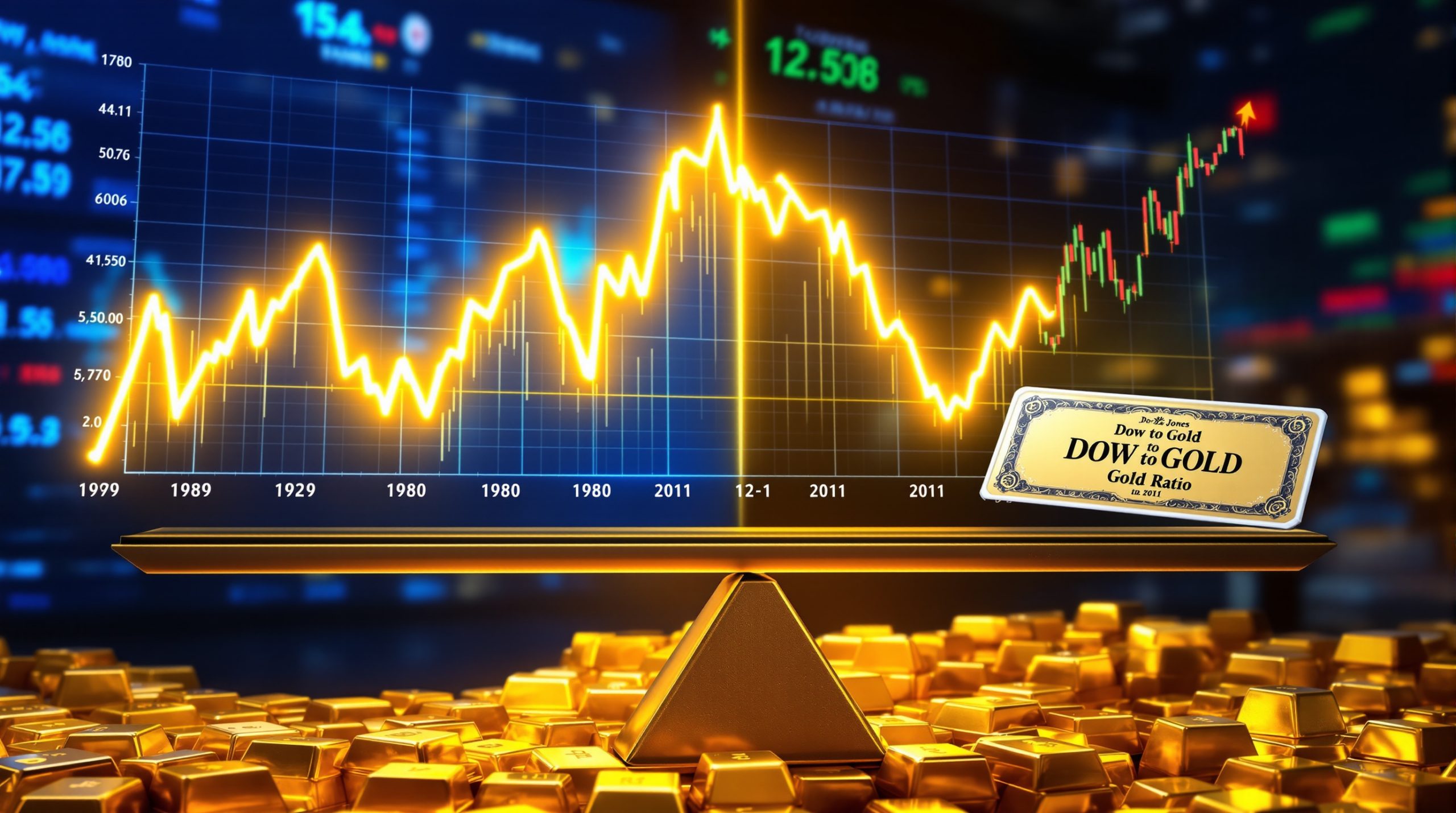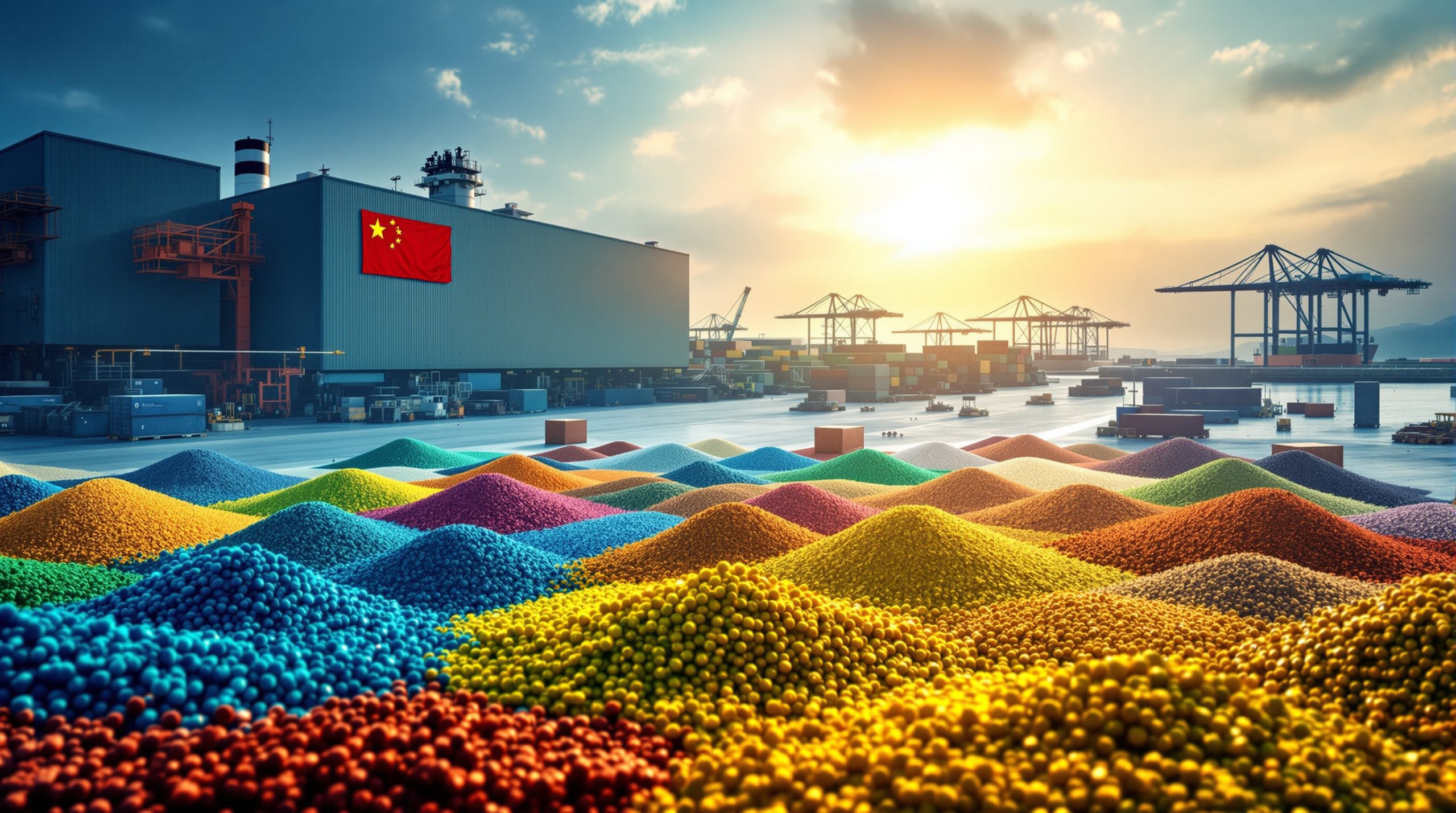The Copper Market Disruption: Trump's Tariff Impact
The global copper market is experiencing unprecedented disruption as the effects of former President Trump's Section 232 investigation continue to ripple through metal exchanges worldwide. Announced in February 2025, this investigation into US copper imports has dramatically altered trading patterns, creating a stark division between US and global copper markets. The Trump tariff effects are significantly reshaping how copper's tariff high and LME metals are traded internationally.
The Tariff Investigation Timeline
Trump's February 2025 announcement gave the Department of Commerce until November 2025 to complete their investigation into whether copper imports threaten US national security. This mirrors the approach previously taken with aluminum, where a 50% tariff was implemented following a similar investigation.
Market participants aren't waiting for the official decision. Anticipating potential restrictions, traders have already created a two-tier pricing system that presents significant arbitrage opportunities for savvy market participants. Physical copper is being aggressively redirected toward US markets, creating supply chain distortions globally.
"The tariff trade has pulled the global supply chain out of shape, creating feast in the US and famine everywhere else," notes industry analyst Andy Home of Reuters.
The Price Divergence Effect
The most visible impact of this market fracture is the $1,200 per metric ton premium that CME copper currently commands over LME copper. Despite this distortion, LME copper has managed a 12% year-to-date gain as of mid-2025, making it the second-best performer among base metals.
Trading patterns have become extraordinarily volatile, with the premium fluctuating wildly as waves of imports periodically flood US markets. The LME's cash-to-three-month period remains in steep backwardation, signaling physical tightness in the market outside the United States.
Industry experts expect Chinese smelters to eventually increase exports to help fill supply chain gaps, but uncertainty around the final tariff decision continues to drive market volatility. Recent copper price prediction analyses suggest further upside potential despite these market distortions.
How Are Other Base Metals Performing in 2025?
The copper tariff situation has created a complex landscape for all base metals, with performances varying dramatically across the spectrum. Let's examine how each metal is faring amid the market turbulence.
Mid-Year Performance Scorecard
| Metal | YTD Performance | Key Metric |
|---|---|---|
| Tin | Highly volatile | Three-year high of $38,395/ton (April) |
| Copper | +12% | $1,200/ton CME premium over LME |
| Lead | +6% | Rising seasonal demand |
| Aluminum | +3% | $1,250/ton US Midwest premium |
| Nickel | Flat | Price hovering near $15,000/ton |
| Zinc | -6% | 151,000-ton global surplus |
Tin has exhibited the most dramatic price movements, reaching a three-year high of $38,395 per ton in April before experiencing sharp corrections. Copper maintains its position as the second-best performer with 12% gains since January, despite market fragmentation.
Lead has shown surprising resilience with a modest 6% increase, while aluminum has struggled to gain momentum despite significant US tariffs. Nickel remains essentially flat as structural oversupply issues persist, and zinc has declined 6%, making it the worst performer among base metals in 2025.
Supply-Demand Factors Driving Performance
Supply disruptions and demand shifts are creating distinctive performance patterns:
- Copper: Physical redirection to US markets has created global supply chain bottlenecks, with LME inventories declining as CME stocks build.
- Tin: Production disruptions at Myanmar's Man Maw mine continue to constrain global supply, while the Bisie mine in the Democratic Republic of Congo has recently resumed operations after a temporary closure.
- Aluminum: The US Midwest premium has skyrocketed to $1,250 per ton over the LME price, while premiums in Europe and Asia have declined due to displaced metal flows.
- Nickel: Persistent oversupply from Indonesian production growth continues to cap price gains, with little prospect for production restraint.
- Zinc: A robust 5.1% increase in global mine production has created a substantial 151,000-ton surplus in early 2025, according to International Lead and Zinc Study Group (ILZSG) data.
What's Happening with Tin's Wild Price Swings?
Tin has emerged as the most volatile metal in 2025, experiencing dramatic price fluctuations that have challenged even seasoned market participants.
Supply Constraints Driving Volatility
After reaching a three-year high of $38,395 per ton in April, tin prices plummeted to $28,925 following Trump's "Liberation Day" tariff announcements. Prices have since recovered to around $33,500 per ton, demonstrating the metal's remarkable volatility.
The key supply issue remains the disruption at Myanmar's Man Maw mine, which has significantly impacted global tin concentrate availability. While the Bisie mine in the DRC has resumed operations, ongoing negotiations between Wa State authorities and mining operators in Myanmar continue to create uncertainty about when full production might resume.
The impact on China's tin industry has been severe:
- Chinese tin concentrate imports have plummeted by 36.5% between January and May 2025
- Refined tin production in China has declined 15% year-over-year as of June 2025
- Inventory levels on both the Shanghai Futures Exchange (SHFE) and London Metal Exchange (LME) continue to decline
"The Wa State authorities have been negotiating new licenses to allow the Man Maw mine to reopen after an absence of almost two years," reports industry expert Andy Home.
Price Backwardation Signals
Tin is showing significant backwardation similar to copper, reflecting genuine physical tightness in the market. LME inventory has halved over the first six months of 2025, intensifying competition for available metal.
The cross-border flow of concentrates to Chinese smelters remains severely limited, forcing Chinese operators to reduce production rates. Until the Man Maw situation resolves, tin's price volatility is likely to continue as the market struggles with inconsistent supply.
Why Is Aluminum Underperforming Despite Tariffs?
Despite facing the same 50% tariffs as other metals in Trump's "Liberation Day" package, aluminum has delivered a relatively modest 3% year-to-date gain, falling short of many analysts' expectations.
The Fractured Aluminum Market
Trump's 50% import tariffs have created severe market distortions, most visibly in the US Midwest premium which has reached $1,250 per ton over the LME price. However, this hasn't translated into overall price strength for the metal.
While US consumers pay significantly higher prices, premiums elsewhere are declining due to:
- Displaced metal flows redirected away from the US market
- Weak demand in Europe and parts of Asia
- Regional imbalances creating pricing inefficiencies
This regional disparity has created a paradoxical situation where the US market experiences extreme tightness while other regions face relative oversupply.
The Tug-of-War for Available Metal
Aluminum has recovered from its April trough of $2,335 per ton to approximately $2,600 per ton currently, representing that modest 3% year-to-date gain. However, this performance masks the intense competition for physical metal taking place.
Falling exchange stocks have created genuine supply concerns, particularly for specific aluminum grades and shapes. The market is experiencing what industry experts describe as a "mega tug-of-war for available metal" that makes it difficult to distinguish genuine market signals from noise.
Analysts continue to debate whether aluminum's underperformance represents:
- A temporary market inefficiency that will eventually correct
- A more fundamental weakness in global aluminum demand
- The early stages of a market adapting to permanent trade barriers
As regional premiums continue to diverge, the aluminum market serves as a case study in how tariffs can fracture previously global commodity markets.
What's Weighing Down Nickel Prices?
Nickel remains the most stagnant base metal in 2025, with prices stubbornly anchored near the $15,000 per ton level despite developments that would typically support higher valuations.
Structural Oversupply Issues
After fourteen consecutive months of inventory builds, LME nickel stocks finally recorded their first decline in May 2025. However, this has done little to lift market sentiment due to several persistent challenges:
- Indonesian production continues to expand, maintaining structural oversupply
- The $15,000 per ton level represents a cost floor for Indonesian producers
- Chinese EV manufacturers are increasingly switching to non-nickel battery chemistry
- Production restraint from Indonesia appears unlikely in the near term
The decline in nickel's importance for electric vehicle batteries has been particularly damaging to market sentiment. As Chinese manufacturers prioritize cost reduction over range maximization, many have shifted toward lithium-iron-phosphate (LFP) battery chemistries that eliminate nickel entirely.
"Nickel's electric dreams have faded as Chinese EV manufacturers switch to non-nickel battery chemistry," notes market analyst Andy Home.
The Indonesian production juggernaut shows no signs of slowing, with industry experts noting that "no one's holding their breath" for any voluntary production restraint from Indonesian producers. Until this fundamental supply-demand imbalance shifts, nickel prices are likely to remain constrained.
How Are Lead and Zinc Diverging in Performance?
Despite often being discussed together as sister metals, lead and zinc have followed dramatically different price trajectories in 2025, highlighting how specific demand drivers can override broader market trends.
Lead's Resilience
Lead has posted a respectable 6% price increase since the start of 2025, outperforming several other base metals despite limited industrial growth. This resilience stems from lead's unique demand profile:
- Strong connection to automotive replacement batteries provides insulation from manufacturing slowdowns
- Seasonal demand peaks during northern hemisphere summer as high temperatures increase battery failures
- Relatively stable supply without major disruptions
Lead is now entering its seasonal peak demand period, with high northern hemisphere temperatures causing a spike in battery failures that drives replacement demand. This automotive aftermarket exposure has cushioned lead from both tariff turbulence and manufacturing weakness affecting other industrial metals.
Zinc's Persistent Underperformance
In stark contrast, zinc has declined 6% since January 2025, making it the worst-performing base metal this year. This underperformance can be directly attributed to supply-side factors:
- Global zinc mine production increased by 5.1% year-over-year from January to April
- Higher refined production, particularly from Chinese smelters
- ILZSG data shows a substantial 151,000-ton global supply surplus in early 2025
"Look no further to understand why the galvanizing metal is so out of favour," notes industry analyst Andy Home, referring to zinc's substantial surplus.
The combination of robust mine production and increased refined output, particularly in China, has created persistent oversupply that continues to weigh on prices. With limited prospects for demand recovery in the near term, zinc's underperformance may continue through 2025.
What's Next for Base Metals Markets?
As market participants navigate the complex landscape created by tariffs and supply disruptions, several key factors will determine performance through the remainder of 2025.
Key Factors to Watch
-
US copper tariff decision timeline and implementation
- The Department of Commerce must complete its investigation by November 2025
- Implementation details will significantly impact global copper flows
- Potential for gradual market adaptation versus continued volatility
-
Chinese smelter export response
- Market expectation for increased Chinese exports to fill supply gaps
- Potential for new trade patterns to emerge as the market adapts
- Chinese domestic demand remains a critical variable
-
Indonesian nickel production decisions
- Little expectation for voluntary restraint without price collapse
- Production cost floor around $15,000 per ton provides some price support
- Potential for regulatory intervention if economic pressure intensifies
-
Seasonal demand patterns
- Lead continues to benefit from summer battery replacement cycle
- Traditional Q3-Q4 manufacturing recovery may be disrupted by trade tensions
- Construction sector demand highly dependent on Chinese policy support
-
Manufacturing activity impacts
- Growing concern about tariff-related drag on global manufacturing
- Regional divergence in industrial production trends
- Automotive sector transition creating shifting metal demand patterns
Trade and Geopolitical Considerations
The "Liberation Day" tariffs have created broad industrial metals uncertainty that extends beyond direct pricing impacts. Metals markets are increasingly influenced by:
- Potential for further trade policy shifts ahead of US elections
- Regional manufacturing divergence as supply chains reorganize
- Safe-haven demand boosting precious metals amid uncertainty
"Trade and geopolitical turbulence have lit a fire under precious metals," notes industry expert Andy Home, highlighting how uncertainty in base metals markets is driving investment flows elsewhere.
As these factors continue to evolve, base metals markets will likely maintain their divergent performance patterns, with supply-constrained metals like copper and tin outperforming those facing structural surpluses like nickel and zinc. The surging copper demand for electrification remains a bright spot, though market distortions from tariffs complicate the outlook.
The remainder of 2025 promises continued volatility as markets adjust to the new reality of fractured global metal trading and regional premium disparities created by the tariff landscape. Investors exploring copper investment strategies should remain attentive to how these tariff impacts evolve, alongside understanding the copper smelter shutdown impact on global supply chains.
FAQ: Understanding Copper and Base Metals Markets
What is causing the price difference between US and global copper markets?
The Section 232 investigation into US copper imports announced in February 2025 has created market expectations of potential tariffs, leading to a $1,200 per metric ton premium for US copper over international prices. This has redirected physical copper flows toward the US market, creating shortages elsewhere and driving price divergence between CME and LME contracts.
Why is tin experiencing such volatile price movements?
Tin's volatility stems from significant supply disruptions, particularly the ongoing closure of the Man Maw mine in Myanmar and temporary shutdown of the Bisie mine in DRC. With Chinese tin concentrate imports down 36.5% and refined production falling 15% year-over-year, the market is experiencing genuine supply constraints against relatively stable demand.
How have Trump's aluminum tariffs affected global markets?
The 50% aluminum import tariffs have created a fractured market with US consumers paying approximately $1,250 per ton over the LME price. Rather than boosting LME futures prices uniformly, the impact has been felt primarily in physical premiums, with non-US regions experiencing declining premiums due to displaced metal flows and weaker demand.
What's behind nickel's persistent price weakness?
Nickel faces structural oversupply as Indonesian production continues to expand while demand growth disappoints. Chinese EV manufacturers are increasingly switching to non-nickel battery chemistries, further weakening the demand outlook. With prices hovering around production cost floors of $15,000 per ton, significant recovery appears unlikely without Indonesian production restraint.
Why is lead outperforming zinc despite both being industrial metals?
Lead's connection to the automotive replacement battery sector provides insulation from broader industrial demand weakness. The metal is entering its seasonal peak demand period as high northern hemisphere temperatures increase battery failures. Zinc, meanwhile, faces a substantial 151,000-ton supply surplus due to 5.1% growth in global mine production and increased Chinese refined output.
Want to Discover the Next Mining Breakout Before the Market?
Discover why significant mineral finds can generate extraordinary returns by exploring Discovery Alert's dedicated discoveries page. Their proprietary Discovery IQ model delivers real-time alerts on potential ASX mining breakthroughs, providing you with actionable insights before the broader market catches on.




